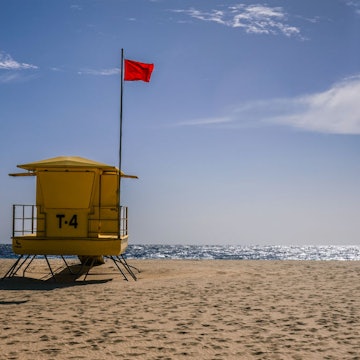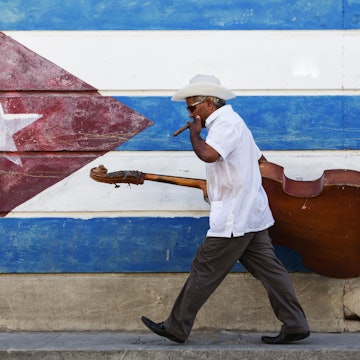

Enrollment in Harvard doesn't come easy, but a stroll around the campus can be enriching if you know where to look. Roman Babakin / Getty Images
If ever there was a place where Einstein, Edison or Eisenhower would feel at home it’s Cambridge, Massachusetts. When the autumn leaves begin to crinkle and fall, the city’s alumni return to this city within greater Boston, on the west bank of the Charles River, to start another semester. So many incredible brain waves occur here. So many eureka moments. And the center of this cerebral universe is Harvard University.
Joining Harvard’s ultra-exclusive alumni club, at an annual cost of around $60,000, is the privilege of the few. But with a cheat sheet on where to go and what to see, strolling its sprawling, stunning campus is gratifyingly free.
Harvard history 101
By anyone’s margin, Harvard is a long way from normal. The world’s richest academic institution, with a $42bn endowment, it is where presidents-in-waiting are tutored and future heads of state are inspired. Count eight US commanders-in-chief and 157 Nobel laureates over the years. Forty-eight Pulitzer Prize winners. One hundred and eight Olympic medalists. It’s an unstoppable return that has shaped world history on an epic scale.
The Harvard empire has been nearly four centuries in the making. Once a cow pasture, it was established in 1636 for the same reason many other Ivy League universities in New England were: to train puritan ministers and clergy. But it’s the stories on a perspective-popping walkabout of Harvard’s 209-acre Cambridge campus that truly set it apart.
'John Adams, John Quincy Adams, George Washington: they all passed through here,' says Trent Bryan, a 21-year-old psychology, neuroscience and philosophy senior who regularly leads campus tours. Past the gates of Harvard Yard, a revered hush falls and the college reveals itself as if a book flipping through its back pages. Georgian gatehouses and gardens retain centuries-old grace, while the storied mansion houses and memorial halls, best seen on approach from Johnston Gate, offer a lesson in colonial architecture and the American Revolution. At every level, the university bears the Harvard imprimatur: red-brick buildings intersected by leafy pathways and Ivy League charm.

Must-see spots (and the secrets behind them)
An indication that Harvard has earned its place in the glamorous zeitgeist beyond the ‘nerdom’ is the popularity of the sculpted bronze statue of John Harvard. It is the third most-photographed statue in the United States, and every day, as clockwork as the hourly lectures, visitors queue at its base for a selfie with America’s most famous benefactor.
But what outsiders don’t realize is that despite Harvard’s Latin motto veritas, or truth, all of these visitors have been duped. Sculptor Daniel Chester French based its appearance on a random student, as no known image of Harvard exists. The date inscribed at the figure’s base is wrong, too. It should read 1636, not 1638. Also incorrect is the description of Harvard as the college’s original founder; that was actually the Massachusetts General Court. Be that as it may, a long-held superstition holds that if you rub Harvard’s shoe it’ll bring good luck. 'If people knew what students have put on it over the years they wouldn’t dare touch it,' says Trent matter-of-factly.

Everyone agrees you must see the lavish Memorial Hall, a Victorian Gothic basilica built for fallen soldiers during the Civil War. It’s Harvard’s spiritual antennae to the north of Bradstreet Gates, yet seems set apart from academia. A hard-earned silence exists inside the transept, and there are stenciled walls and stained-glass windows, which in the right light filter a spectrum of New England colors onto the floor. Maple reds burn and yellows glow. Next door, above the basement student pub, is Annenberg dining hall. The soaring, trussed ceiling of this impressive 1874 structure recalls Hogwarts, without the pointy wizard hats. It’s a student-only affair, but come at meal time for a glimpse into the realities of graduate life.
Anchoring the university grounds is the Widener Library, one of more than 70 libraries on campus. Skirted by steep stairs and braced by Corinthian columns, it’s the world’s largest private library and has been the preserve of America’s literati for centuries. The floors are a bamboozling warren of nearly 60 miles of bookshelves, although non-students are relegated to admiring the elegant facade. There are 3.5 million volumes in its collection, including a sheepskin-covered original Shakespeare and a priceless Gutenberg Bible. TS Eliot has borrowed books from its vaults, as has Gertrude Stein, who took philosophy classes at nearby Emerson Hall.
'The library was named by Lady Widener after her son, Harry, who died on the Titanic,' says Trent. 'She survived, but he refused to leave the sinking ship until he’d packed one of his favorite books. That’s how obsessive a collector he was.'
Potted highlights from American history linger elsewhere. The Pusey Library, open to the public, holds America’s oldest collection of maps and atlases. Nearby, the Harvard Art Museums – a triumvirate of the Fogg, Busch-Reisinger and Arthur M Sackler museums – make up a miniature Louvre, with an encyclopedia of sculpture, watercolors and prints. The Peabody Museum of Archaeology and Ethnology, meanwhile, tells the story of North America’s indigenous peoples, from thunderbird-topped totem poles to Native American canoes.
Famous people and places
Pop-culture fans are also drawn to Harvard, thanks to its many famous past students and connections to cultural moments. 'Matt Damon was a member of the class of ’92 and he wrote the script [for Good Will Hunting] in Matthews Hall,' says Trent, pointing to a red-brick dorm. 'John F Kennedy lived in Winthrop House, but his room was destroyed by the installation of an elevator. You know, Harvard can still shaft you after you’ve left!'
Billionaire Bill Gates dropped out of Harvard before becoming one of the world’s richest men. Satire magazine National Lampoon was born at the Harvard Lampoon Building. And you if you walk past Kirkland House, you’ll see where a social media phenomenon was born. 'I live in Kirkland, just above the room that Mark Zuckerberg founded Facebook in,' says Trent, pointing to H33, a ground-level dorm barracks. 'He and Bill Gates are the only two to receive honorary diplomas without graduating.'
Understandably, a place like this inspires scholarship. But it’s not always an empirical and rational place, as an insight into the realities of late-night student life shows. One such notorious ritual is the Primal Scream, a midnight run through the Yard on the last night of reading period before final exams. Needless to say, it’s a lowbrow combo of streaking and stripping, making as much of an impression on a visitor as any of the college’s more virtuous traditions.
Make it happen
Self-guided walking tour maps, offered in nine different languages, can be picked-up from the Harvard Information Center. And for an undiluted view on the student experience, the one-hour tour is also wonderfully free. All buildings except the Widener Library and, of course, student dorms, can be viewed by the public, although the dining hall is closed to visitors outside of guided tours.
Mike MacEacheran travelled to Cambridge with assistance from Visit Massachusetts. Lonely Planet contributors do not accept freebies in exchange for positive coverage.
















